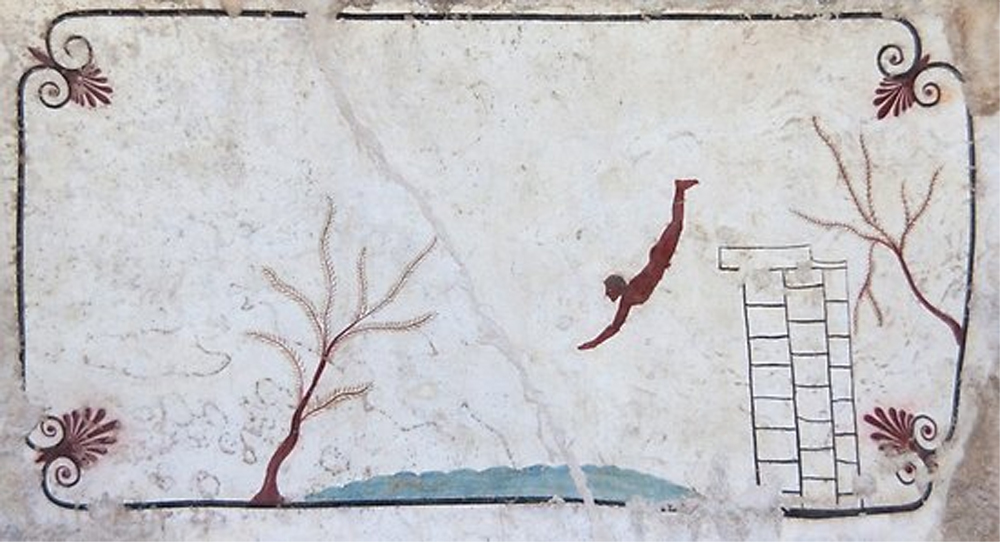|
20. Athenæus III, p. 93, D:
Ἰσίδωρος δʼ ὁ Χαρακηνὸς ἐν τῶι τῆς Παρθίας Περιηγητικῶι κατὰ τὸ Περσικὸν πέλαγος νῆσόν φησιν εἶναί τινα, ἔνθα πλείστην μαργαρῖτιν εὑρίσκεσθαι. Διόπερ σχεδίας καλαμίνας πέριξ εἶναι τῆς νήσου, ἐξ ὧν καθαλλομένους εἰς τὴν θάλασσαν ἐπʼ ὀργυιὰς εἴκοσιν ἀναφέρειν διπλοῦς κόγχους. Φασὶ δʼ, ὅταν βρονταὶ συνεχεῖς ὦσι καὶ ὄμβρων ἐκχύσεις, τότε μᾶλλον τὴν πίνναν κύειν, καὶ πλείστην γίγνεσθαι μαργαρῖτιν καὶ εὐμεγέθη. Τοῦ δὲ χειμῶνος εἰς τὰς ἐμβυθίους θαλάμας δύνειν εἰώθασιν αἱ πίνναι· θέρους δὲ τὰς μὲν νύκτας κεχήνασι διανηχόμεναι, ἡμέρας δὲ μύουσιν. Ὅσαι δʼ ἂν πέτραις ἢ σπιλάσι προσφυῶσι, ῥιζοβολοῦσι, κἀνταῦθα ἐνδῦσαι τὴν μαργαρῖτιν γεννῶσι. Ζωογονοῦνται δὲ καὶ τρέφονται διὰ τοῦ προσπεφυκότος τῆι σαρκὶ μέρους. Τοῦτο δὲ συμπέφυκε τῶι τοῦ κόγχου στόματι, χηλὰς ἔχον καὶ νομὴν εἰσφέρον. Ὃ δή ἐστιν ἐοικὸς καρκίνωι μικρῶι, καλούμενον πιννοφύλαξ. Διήκει δʼ ἐκ τούτου ἡ σὰρξ μέχρι μέσου τοῦ κόγχου, οἱονεὶ ῥίζα, παρʼ ἣν ἡ μαργαρῖτις γεννωμένη, αὔξεται διὰ τοῦ στερεοῦ τῆς κόγχης, καὶ τρέφεται, ὅσον ἂν ἦι προσπεφυκυῖα χρόνον. Ἐπειδὰν δὲ παρὰ τὴν ἔκφυσιν ὑποδυομένη ἡ σὰρξ καὶ μαλακῶς ἐντέμνουσα χωρίσηι τὴν μαργαρῖτιν ἀπὸ τοῦ κόγχου, ἀμπέχουσα μὲν οὐκέτι τρέφει, λειοτέραν δʼ αὐτὴν καὶ διαυγεστέραν ποιεῖ καὶ καθαρωτέραν. Ἡ μὲν οὖν ἐμβύθιος πίννα διαυγεστάτην ποιεῖ καὶ καθαρωτάτην καὶ μεγάλην γεννᾶι μαργαρῖτιν, ἡ δὲ ἐπιπολάζουσα καὶ ἀνωφερής διὰ τὸ ὑπὸ τοῦ ἡλίου ἀκτινοβολεῖσθαι, δύσχρους καὶ ἥσσων. Κινδυνεύουσι δʼ οἱ θηρῶντες τοὺς μαργαρίτας, ὅταν εἰς κεχηνότα κόγχον κατʼ εὐθὺ ἐκτείνωσι τὴν χεῖρα· μύει γὰρ τότε, καὶ πολλάκις οἱ δάκτυλοι αὐτῶν ἀποπρίονται· ἔνιοι δὲ καὶ παραχρῆμα ἀποθνήσκουσιν. Ὅσοι δʼ ἂν ἐκ πλαγίου ὑποθέντες τὴν χεῖρα τύχωσι, ῥαιδίως τοὺς κόγχους ἀπὸ τοῦ λίθου ἀποσπῶσιν.
|
|
20. (A fragment quoted from Athenaeus, III, 46.)
Isidore of Charax in his description of Parthia says there is a certain island in the Persian Gulf where many pearls are found; and that round about the island there are rafts made of reeds, from which men dive into the sea to a depth of 20 fathoms and bring up double-shelled oysters. They say that when there are frequent thunderstorms and heavy rains, the oyster produces the most young, and they get the most, the best and the largest pearls; and in the winter the shells are accustomed to sink into holes in the bottom, but in the summer they swim about all night with their shells open, but they close in the daytime. And when they cling to stones and rocks in the waves they take root and then, remaining fixed, produce the pearls. These are engendered and nourished by something that adheres to their flesh. It grows in the mouth of the oyster and has claws and brings in food. It is like a small crab and is called "Guardian of the oyster." Its flesh penetrates through the center of the shell like a root; the pearl being engendered close to it, grows through the solid portion of the shell and keeps growing as long as it continues to adhere to the shell. But when the flesh gets under the excrescence and cuts its way onward, it gently separates the pearl from the shell and then, when the pearl is surrounded by flesh, it is no longer nourished in such manner as to grow further, but the flesh makes it smoother, more transparent and more pure. And when the oyster lives at the bottom, it produces the clearest and largest pearls; but those that float on the surface, because they are affected by the rays of the sun, produce smaller pearls, of poorer color. The pearl divers run into danger when they thrust their hands straight into the open oyster, for it closes up and their fingers are often cut off, and sometimes they perish on the spot; but those who take them by thrusting their hands under from one side, easily pull the shells off from the rocks.
|
